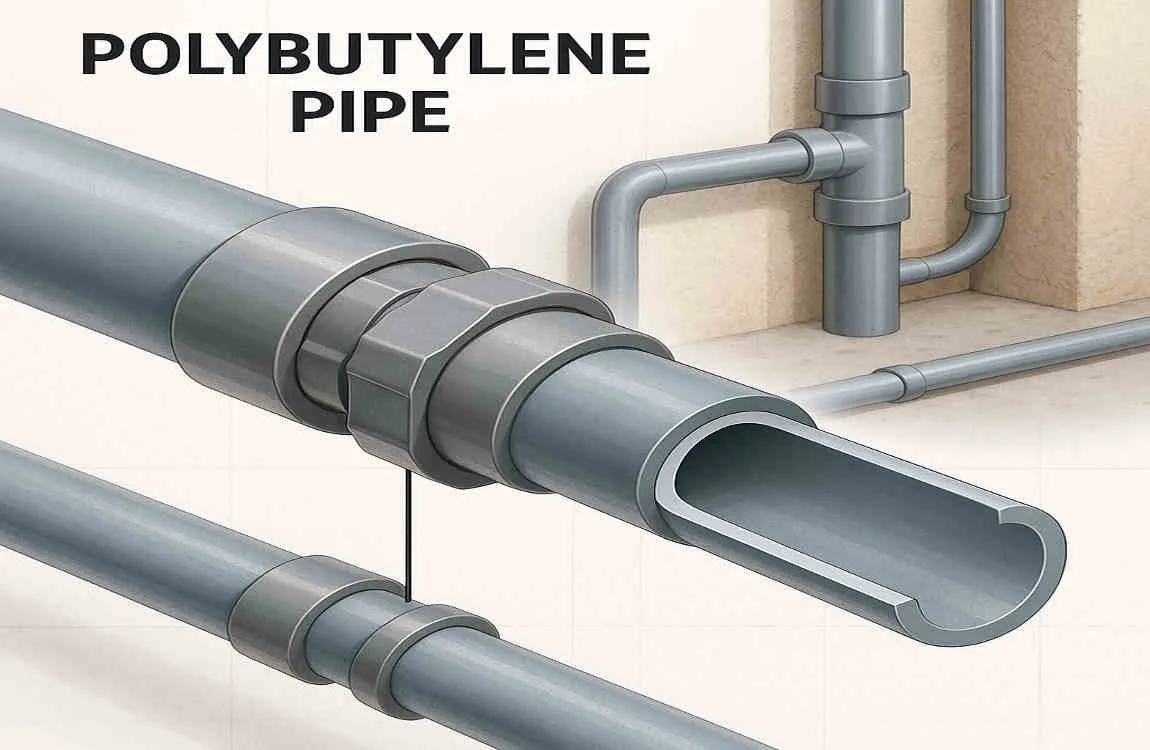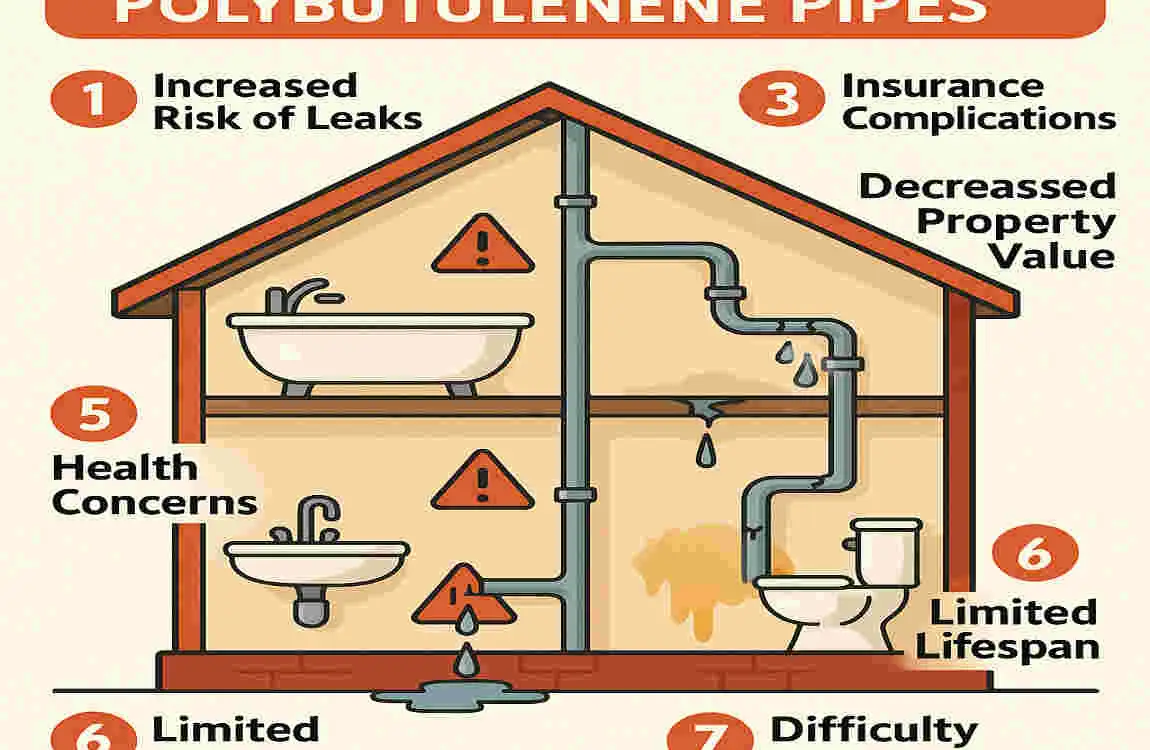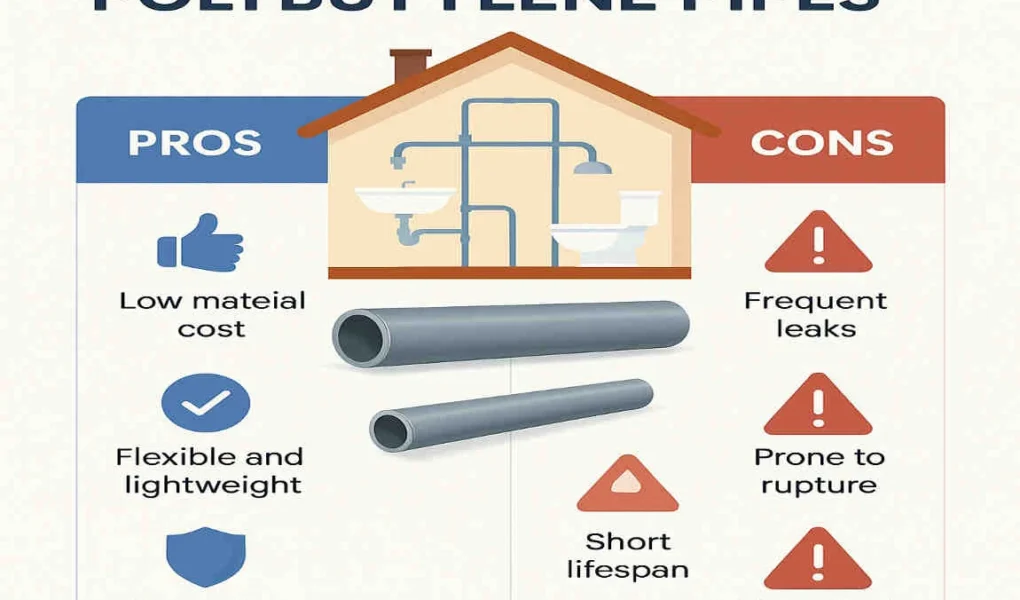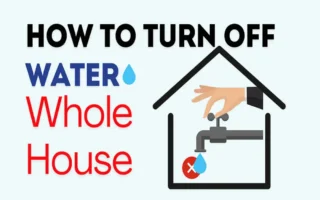Hey there, home buyer! If you’re scrolling through real estate listings and stumble upon a house that seems like a steal, but then you hear about something called polybutylene pipes, you might pause and wonder: can you buy a house with polybutylene pipes? It’s a fair question, and one that often arises for individuals considering older homes.
Polybutylene pipes, often referred to simply as PB pipes, are a type of plastic plumbing that was widely used in home building from the late 1970s to the mid-1990s. Builders loved them because they were cheap and easy to install, making them a go-to choice for millions of homes across the U.S., especially in warmer areas like the Sun Belt . However, here’s the catch—they’ve developed a somewhat rocky reputation lately due to issues such as cracking and leaking over time.
What Are Polybutylene Pipes?

can you sell a house with polybutylene pipes
Imagine you’re building a house in the 1980s, and you want plumbing that’s quick to install and doesn’t break the bank. That’s where polybutylene pipes come in. These are essentially tubes made from a specialised type of plastic resin called polybutylene, which is both flexible and lightweight . Unlike traditional metal pipes, such as copper, these plastic ones were a game-changer because they didn’t rust and were extremely easy to handle.
Between 1978 and 1995, builders installed them in over 10 million homes across the United States. They typically appeared in residential plumbing systems, where they carried water from the main line to faucets, toilets, and appliances . Why is it so popular? They were significantly cheaper than copper—sometimes half the cost—and installation was a breeze. No need for heavy tools or soldering; you can crimp them together with basic fittings. This made them ideal for the housing boom in sunny states like Florida, Texas, and California, where quick construction was key.
Geographically, you’ll find them most in the Sun Belt region, where warmer climates mean less worry about freezing pipes. At the time, they seemed innovative—flexible enough to bend around corners without joints that could leak, and they promised to last for decades. Builders and homeowners alike thought they were the future of the plumbing industry.
But, not everything panned out perfectly. Over the years, these pipes began to show their flaws. The plastic can degrade, especially when exposed to chlorine in municipal water supplies or high water pressure . They become brittle, leading to cracks and failures. That’s why, by the mid-1990s, manufacturers stopped making them, and they’ve been phased out of new construction. Today, if you’re looking at a home from that era, there’s a chance PB pipes are lurking behind the walls.
Don’t worry if this sounds technical—think of it like this: PB pipes were the affordable, trendy option of their day, much like how smartphones replaced flip phones. However, just as old technology can glitch, these pipes have their limitations. If you’re considering a house with them, understanding this history helps you see the bigger picture. Have you ever bought something that seemed great at first but needed upgrades later? That’s the vibe here.
Can You Buy a House with Polybutylene Pipes?

Let’s cut right to the chase: can you buy a house with polybutylene pipes? Yes, you absolutely can. These homes are still on the market, and plenty of people purchase them every year. But here’s the thing—it’s not without some hurdles. You need to go in with your eyes wide open, because these pipes can affect everything from the home’s price to your future expenses.
First off, houses with PB pipes often sell for less than similar properties with modern plumbing. Why? Buyers become nervous about potential issues, so sellers may lower the price to attract offers . This could mean you snag a bigger home or one in a nicer neighbourhood that would otherwise be out of your budget. However, that lower price might come with strings attached, like a longer time on the market. Homes with these pipes can sit unsold for months, giving you more leverage in negotiations.
When you’re making an offer, factor in the cost of replacing the pipes. Estimates vary, but you’re looking at anywhere from $4,000 to $15,000 or more, depending on the house size . Use this as leverage—ask the seller for credits or a price reduction to offset the cost. Also, get a thorough inspection. A skilled home inspector or plumber can inspect the pipes’ condition and identify any early signs of trouble.
Insurance is another biggie. Some companies hike premiums or even refuse to cover homes with PB pipes, fearing claims from leaks. Before closing, chat with insurers to see what you’re up against. And don’t forget to consult professionals: a real estate agent familiar with older homes and a licensed plumber can provide you with tailored advice.
In short, buying such a house is feasible, but it requires thorough research. Are you ready to invest time and possibly money in upgrades? If so, it could be a smart buy. If not, you should continue your search. What do you think—does the potential savings outweigh the risks for you?
7 Pros of Buying a House with Polybutylene Pipes

Buying a home with polybutylene pipes isn’t all doom and gloom. In fact, there are several real advantages that savvy buyers utilise to their advantage. Let’s break down seven key pros, one by one. I’ll explain each in detail so you can see how they might fit your situation.
Lower Initial Purchase Price
One of the biggest draws? These homes often come with a discounted price tag . Sellers know that PB pipes can deter buyers, so they price the property accordingly to sell it. Imagine getting 10-20% off the market value—that could free up cash for other things, like renovations or furniture.
For you, this means access to homes that you might not otherwise afford. Picture landing a spacious family home in a great school district, all because of those pipes. It’s like finding a diamond in the rough. Just remember that savings upfront might be used for fixes later, but it’s a solid starting point.
Negotiation Leverage
Got your eye on a house? The presence of PB pipes gives you serious bargaining power . Point out the potential replacement costs during negotiations, and you may be able to secure a lower price, seller credits, or even have repairs made before closing.
Think about it: sellers want to close the deal quickly, especially if the home’s been listed for a while. You can say something like, “Hey, I’d love this place, but those pipes worry me—can we adjust the offer?” Many times, they’ll meet you halfway. It’s empowering. This turns a potential con into your secret weapon.
Short-Term Usability
Not all PB pipes are on their last legs. Many are still working fine, giving you time to plan . If the pipes aren’t showing immediate issues, you could live comfortably for a few years while saving for upgrades.
This is great if you’re not in a rush. Use that window to budget, research options, or even increase your home’s value through other improvements first. It’s like buying time—literally. Have you ever moved into a fixer-upper and tackled projects one at a time? That’s the flexibility here.
Potential for Home Equity Growth
Here’s where it gets exciting: replacing those pipes can significantly increase your home’s value. Once upgraded to modern materials, the house becomes more appealing to future buyers, boosting your equity.
Invest a few thousand now, and you might see tens of thousands in returns when you sell. It’s a strategic move for long-term owners. Additionally, with rising home prices, that initial discount could translate into a substantial profit. Are you thinking about this as an investment? It could pay off big.
Opportunity to Customise Replacements
When it’s time to swap them out, you get to choose the best modern options. Opt for flexible PEX pipes, durable copper, or another material that suits your needs and budget.
This customisation means tailoring the plumbing to your lifestyle—perhaps adding features like improved water flow or energy efficiency. It’s not just a fix; it’s an upgrade on your terms. Exciting. You control the outcome, turning a drawback into a personalised improvement.
Lower Installation Costs Initially
Originally, PB pipes were chosen because they were cheaper to install than alternatives, such as copper. While this is a historical pro, it ties into why these homes were built affordably in the first place.
For you as a buyer, the house might have other cost-saving features from that era. And when you replace, you benefit from that lightweight base—easier access for plumbers. It’s a subtle win that keeps overall costs in check.
Lightweight and Easy to Work With
PB pipes are light and flexible, which makes original installations quick and less labour-intensive. Today, this can simplify inspections or partial fixes.
Plumbers appreciate how easy they are to handle, which can reduce labour costs during replacement. It’s a small but practical benefit, especially if you’re working in phases. Ever dealt with heavy materials? This is the opposite—straightforward and user-friendly.
To sum these up, here’s a quick bulleted list of the pros for easy reference:
- Affordable entry point: Lower prices open doors to better homes.
- Bargain smartly: Leverage for deals.
- Time on your side: Functional for now.
- Build wealth: Equity boost post-upgrade.
- Personalise it: Choose your plumbing.
- Cost-effective roots: Original savings linger.
- Handy material: Easier handling.
These benefits show how PB pipes can be a hidden gem for the right buyer.
7 Cons of Buying a House with Polybutylene Pipes

Now, let’s flip the coin and talk about the downsides. These are the reasons many buyers walk away, and they’re worth considering carefully. I’ll detail each of the seven cons, breaking them into digestible parts so you can weigh them against your own priorities. Remember, knowledge is power—let’s dive in.
High Risk of Pipe Failure and Leaks
PB pipes have a tendency to fail over time. The plastic becomes brittle, especially when exposed to chlorine in tap water, which can lead to cracks and bursts.
This isn’t just a minor annoyance—it can happen suddenly, flooding your home. Studies show failure rates spike after 10-15 years, and if your house is from the 80s or 90s, that’s now. Imagine waking up to water everywhere; it’s a nightmare. Chlorine accelerates the breakdown, turning what was once flexible into something fragile. You need to ask: Are you prepared for that risk?
Potential for Significant Water Damage
When those pipes burst, the damage can be extensive and expensive . Water seeps into walls, floors, and foundations, causing mould, rot, and structural issues.
Repair costs? They add up quickly—think thousands for cleanup, plus the cost of repairing whatever was damaged. And if it’s hidden behind walls, you might not notice it until it’s too late. This con hits hard for families or anyone who values a worry-free home. Have you dealt with water damage before? It’s disruptive and stressful.
Health Risks
Older PB pipes may leach chemicals into your water, such as BPA or phthalates. These are substances linked to health concerns, particularly with prolonged exposure.
While not every pipe does this, the risk is there as they degrade. Families with kids or those with health sensitivities should take note. It’s like drinking from an old plastic bottle that’s starting to break down—better safe than sorry. Regular water testing can help, but why add that worry?
Short Lifespan
Compared to copper (which lasts over 50 years) or modern plastics, PB pipes have a limited lifespan of about 10-15 years [9]. Many installed in the 80s are way past their prime.
This means you’re likely facing replacement sooner rather than later. It’s not built to last, which shortens the overall durability of your home. If you’re buying for the long haul, this could mean ongoing maintenance headaches. Doesn’t that make you rethink the bargain?
Insurance Issues
Getting coverage can be a battle. Insurers often charge higher premiums or flat-out deny policies for homes with PB pipes. They see them as high-risk for claims.
Even if you get insured, claims related to PB failures might be rejected. This leaves you footing the bill for damages. Before buying, call around—some companies specialise in older homes, but it’s an extra step. Frustrating, right? It could significantly increase your monthly costs.
Difficult and Expensive Replacement Process
Replacing PB pipes isn’t cheap or easy. Costs typically range from $4,000 to $15,000, depending on the size and layout of your home. It involves tearing into walls and floors, which means disruption.
You’ll need pros to do it right, and finding ones experienced with PB is key. Additionally, the process can take weeks, transforming your home into a construction site. Budget for that—it’s not just money, but time and hassle. Are you up for it?
Legal and Code Issues
These pipes are banned in new builds due to their problems, which affect resale value and code compliance.
When you sell, buyers might baulk, or inspectors could flag issues. It also complicates things legally—some areas require disclosure or even mandatory replacement. This diminishes the home’s appeal, potentially leaving you with a difficult decision to make. It’s a long-term con that bites when you least expect it.
For a clearer comparison, check out this table summa pros and cons:
Aspect Pros Cons
Cost Lower purchase price High replacement costs ($4K-$15)
Risk Short-term usability High failure and leak risks
Value Equity growth potential Lower resale value, insurance woes
Customisation Opportunity to upgrade Health and legal issues
Practicality Negotiation leverage, easy to work, Short lifespan, water damage
This table highlights the trade-offs at a glance. Overall, these cons underscore the importance of caution.
How to Identify Polybutylene Pipes in a House

Spotting PB pipes isn’t rocket science, but it does require some detective work. They’re usually gray, blue, or black plastic tubes, flexible like a garden hose but sturdier . Look for stampings like “PB” or “Qest” on the pipes themselves.
Start your search in common spots: under kitchen or bathroom sinks, in the basement or crawlspace, or near the water heater. Peek behind access panels or in utility closets. If you see plastic fittings instead of metal, that’s a clue.
But don’t go it alone—hire a qualified plumber or home inspector. They use tools like cameras to check inside walls without damage. It’s worth the cost for peace of mind. Ever tried DIY plumbing? This is one area to leave to the experts.
What to Do if You Buy a House with Polybutylene Pipes

So, you’ve decided to go for it—congrats! Now, plan for replacement. Budget right away; don’t wait for a leak. Options include copper for durability, PEX for flexibility, or CPVC for affordability.
If a full swap is too expensive, consider phasing it: start with high-risk areas, such as the kitchen. Get multiple quotes from contractors—aim for three to compare. Check reviews and ensure they’re licensed.
Notify your insurer after purchase; they may require updates. And keep records of everything for resale. You’re taking control—smart move!
Can You Sell a House with Polybutylene Pipes? FAQ
Yes, you can sell a house with polybutylene pipes, but there are important considerations to keep in mind. Polybutylene pipes are known for their tendency to fail over time, which can lead to leaks and costly repairs. This reputation can make selling a home with these pipes more challenging, but it is certainly possible with the right approach.
Key Considerations When Selling a House with Polybutylene Pipes
- Disclosure Requirements
In most states, sellers are legally required to disclose the presence of polybutylene pipes to potential buyers. Failing to do so could lead to legal issues later on . - Impact on Market Value
Homes with polybutylene pipes often experience a reduction in market value. Buyers may request a price reduction to account for the cost of replacing the pipes . Sellers should be prepared to negotiate or adjust their asking price accordingly. - Buyer Concerns
Buyers may be hesitant to purchase a home with polybutylene pipes due to the risk of leaks and the potential for insurance complications. Many insurance companies exclude coverage for damage caused by polybutylene pipes, which can make the property less appealing . - Options for Sellers
- Replace the Pipes Before Selling: Some sellers choose to replace the polybutylene pipes before listing the home. This can make the property more attractive to buyers and may allow you to sell at a higher price .
- Sell As-Is: If you don’t want to replace the pipes, you can sell the house as-is. However, this may limit your pool of buyers to those willing to take on the cost of replacing the pipes themselves .
- Offer Incentives: To make the sale more appealing, you could offer incentives such as a home warranty that covers plumbing issues for the first year or agree to cover some of the buyer’s closing costs .
- Highlight Other Selling Points
Emphasize the strengths of your property, such as its location, recent renovations, or energy-efficient upgrades. This can help offset concerns about the polybutylene pipes .
Practical Tips for Selling a Home with Polybutylene Pipes
- Get a Professional Inspection: Have a licensed plumber inspect the pipes and provide a detailed report. This can help you understand the condition of the plumbing and provide transparency to potential buyers.
- Be Honest and Transparent: Disclose the presence of polybutylene pipes upfront. Buyers appreciate honesty, and it can prevent legal disputes later.
- Work with Experienced Agents: A real estate agent familiar with selling homes with polybutylene pipes can help you navigate the process and market the property effectively.




